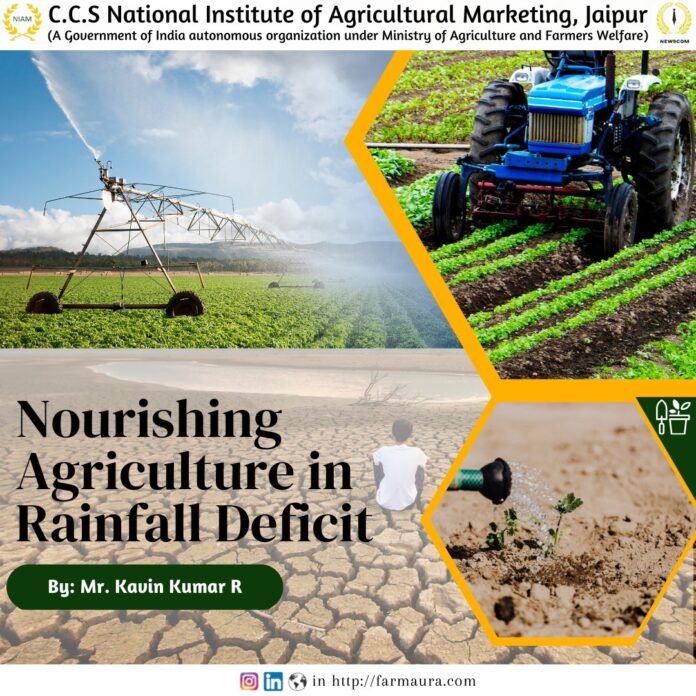Agriculture and climate are closely linked to processes on a global scale. Agriculture is negatively impacted by even minor climate changes, which results in a reduction in productivity. Nearly two-thirds of India’s workforce (50% population) is employed in agriculture, which is essential for maintaining food, nutrition, and livelihood security. 18.4% of India’s GDP comes from agriculture and related industries. Crops are chosen specifically for farming activities based on factors such as climate, soil type, resource availability, etc.
More over half of India’s cropland is irrigated by the south-west monsoon. Its arrival heralds the start of the rainfed kharif agricultural season, which is strongly reliant on the monsoon. Agriculture production is influenced by rainfall quality. In June, when the monsoon rains begin, farmers begin planting the crops. Usually August typically experiences the second-highest amounts of precipitation throughout the monsoon season following July’s 28 cm of rainfall. But in year 2023 August witnessed the lowest rainfall in over a century in India, with a 36% reduction compared to the usual amount. Instead of the over 255 mm anticipated, the country as a whole only received roughly 162 mm of rain during the month. In August, rainfall was 47% below average in Central India and 60% below average in South India. Only one region in the country experienced average rainfall: the East and Northeast. The majority of India faced large rainfall shortfalls in August as a result of the El Nino phenomenon’s deepening and unfavourable circumstances in the Arabian Sea and the Bay of Bengal.
The availability of nutrients and water are two bio-physical inputs that are essential for crop growth. The availability of water and the uptake of nutrients by the soil interact synergistically. These complex linkages get much more difficult during droughts, and crop systems may become water- and nutrient-deficient at the same time. Amount of precipitation decides the use of fertilizers, where the higher the precipitation in proceeding year higher the fertilizer application that are positively correlated. In contrast, there is negative relation between low level of drought and fertilizer application. Farmers spend less on fertilizer as a result of the poorer profitability brought on by the recent droughts. There is another phenomenon that is difficult to understand and followed by farmers, increase in the fertilizer application when they experience the severe drought in preceding year. Farmers will adopt higher application rate to safeguard production and expecting for higher profitability in coming year. The main reason behind it will be farmers consider this increased rate application as insurance to the crop because they can not invest in other inputs or structures which are not subsidized.
This phenomenon is more prevalent in India because most of them are small and marginal farmers. We faced heavy rainfall deficit in this season which will extensively pay way towards higher fertilizer application rates with increased hope of getting highest production. India should be ready with upcoming scenario also with environmental concern of higher fertilizer application.




